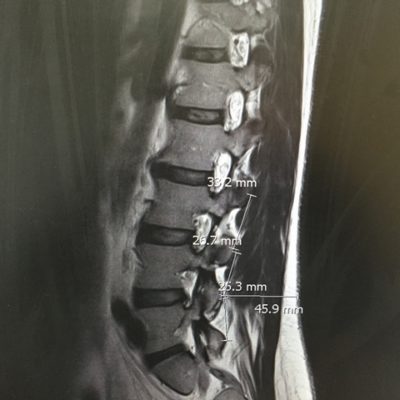What are Spinal Injections?
The term injection refers to the how medication or supplements are introduced into the body.
Most medication is administered via tablets or drinkable liquid formulas. There are however other ways to administered medication and this includes 'injections'.
Some injections are designed to go directly into the blood stream, others need to be injected into muscles or joints.
A Spinal Injection therefore refers to medication that is injected into the spine.
The key issue to understand is that there are many different medications that can be injected and many different spinal areas into which these injections can be administered to.
What are the most common Spinal Injections?
There are three main spinal injections; an epidural, nerve root block and facet joint injection.
Epidural
This is an injection administered into the spinal canal, the central part of the spine which protects the spinal cord and lumbar spinal nerve roots.
The injection can be administered at the base of the spine or between vertebral bones around the mid-lumbar region.
Typically used for pain management of the lower limbs during surgery, pregnancy and for symptom relief of spinal stenosis (narrowing of the spine around the nerves).
These injections should be administered in hospital and research indicates that the steroid should be a non particulate solution in order to further minimise the risk of clots and damage to vascular tissue within the spine.
The forgotten facet joint injection
Facet joint injections often get over looked. One potential reason is the public's and healthcare workers perception that 'bad' back pain and 'referred pain' must arise from a 'trapped nerve' or a 'slipped disc'.
The reality is that as we get older the likelihood of back / leg pain from a facet joint irritation increases year on year.
Over time, with normal ageing , the discs between our vertebral bones loose height. This then positions the facet joints closer together and at risk of exposure to increasing compression. This mechanical force transmitted through facet joints is a very common cause of back and leg pain.
Facets joints are bony joints, just like any other joint in our body and like an arthritic knee, for example, they can respond well to injections of cortico-steroids.

The white marking 25.3mm shows the depth of a facet joint below the skin. Nerve roots and the spinal canal are deeper and can be seen under the numbers 26.7 and 33.2 (white oval areas).
Nerve Root Blocks
Nerve root blocks are often considered when the persons pain is thought to be attributed to the irritation of a specific nerve. For example a right sided L5 nerve root block is a consideration if someone has 'radicular' pain down their leg and into their foot.
An MRI scan can further provide some insight into the likelihood of nerve irritation based on the observation of a nerve being surrounded by displaced tissue or being deviated (moved) from its normal pathway.
A nerve root injection is more difficult to perform and again it is recommended that the injection is performed in a hospital setting under x-ray or CT guidance.
So what does the Injection Clinic think to Spinal Injections?
Firstly, at the Injection-Clinic we only perform facet joint injections. These are safe to administer under ultrasound and with the same medication as we use for all other joint injections.
The success of the injections varies from life changing to no effect. The main reason for this is due to the individuals specific diagnosis.
If the facet joint is inflamed and the chemical inflammatory changes are causing pain then a facet injection will have a good outcome. If the pain is due to mechanical compression on a nerve then the injection will have little benefit.
The problem is that we never fully know the complete diagnosis and consequently injections are administered for the purpose of diagnosis as much as they are administered for treatment.
Priced appropriately so you can find out.
An important consideration when thinking about spinal injections is the cost. There is no guarantee of the injection working, but because most spinal injections are administered in a hospital setting the cost is very high.
At the Injection Clinic, whilst the procedure is more complex than injecting a knee or shoulder joint, we do not charge a premium.
Facet joint injections are £80 each. Dependent on the findings from physical examination, a client normally has either two or four facet joint injections.
Best outcome, as always, isn't just an injection!
It is important to remember the underlying clinical principles of the Injection-Clinic that pain typically arises from both mechanical and chemical changes.
Whilst an injection will change the chemistry, it is the movement, posture and strength of supporting muscles around the spine that influence the mechanical strain.
As with all conditions aim to improve chemistry and your body's alignment, strength and pattern of movement.
Please Note: There are diseases and pathology that prevent good health irrespective of an individuals actions. The advice in this blog is not a substitute for medical opinion. Always consult your healthcare professional for specific advice on your personal condition. But please remember, best health irrespective of condition will always be optimised if your chemistry is made as good as possible.
